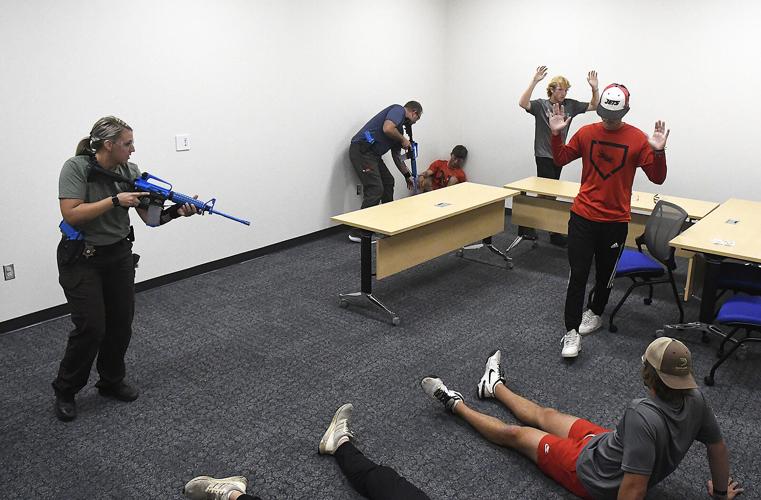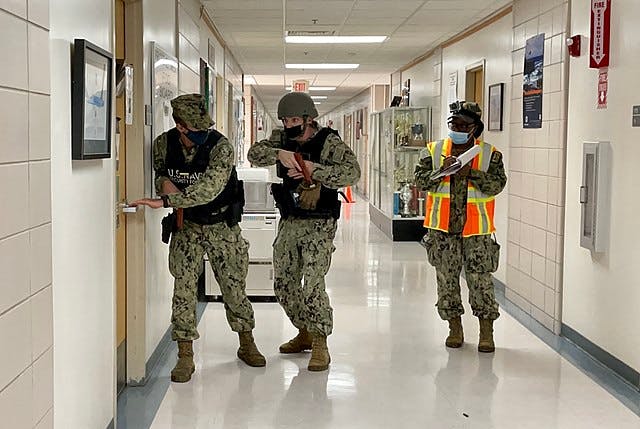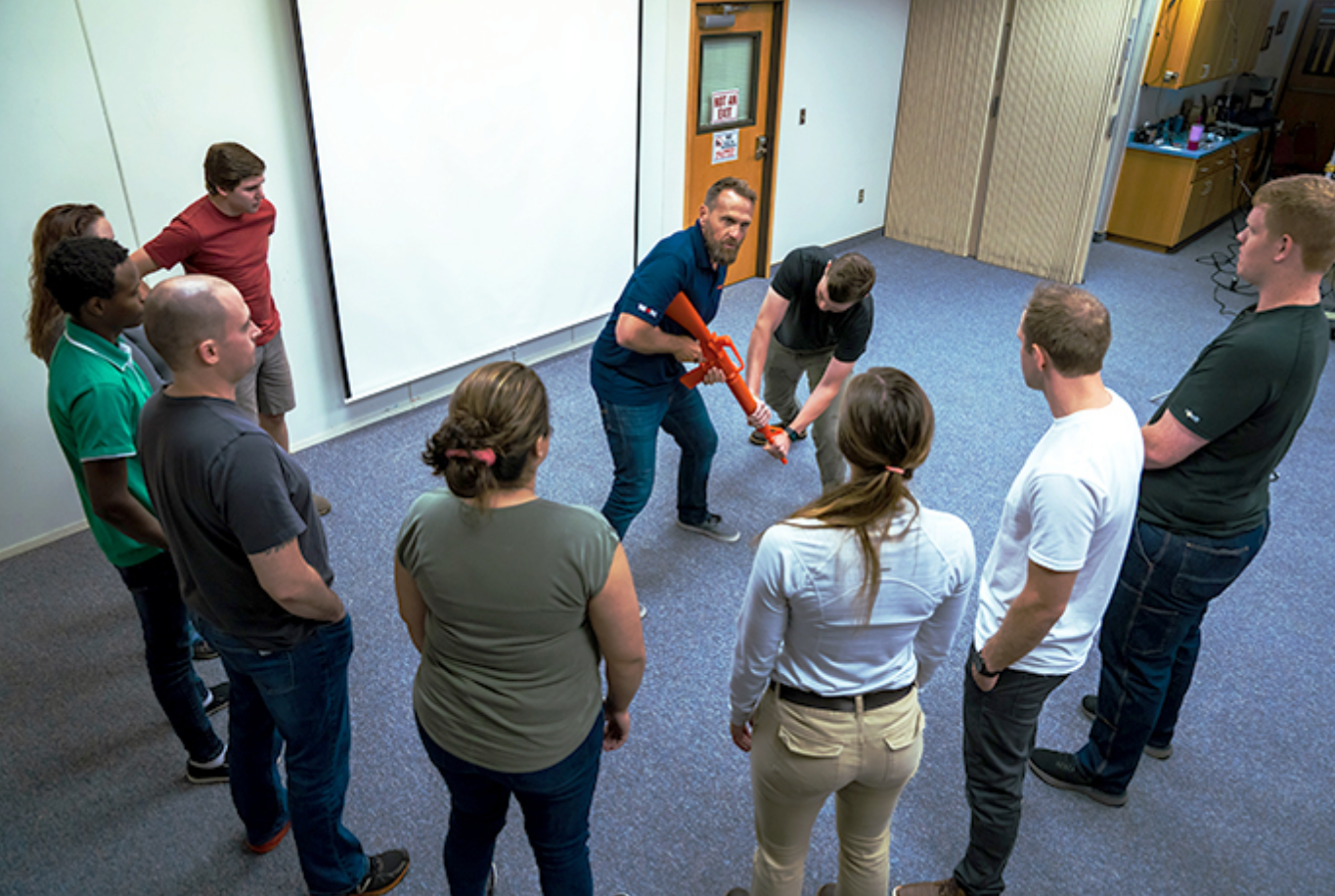The Advantages of Recurring Active Shooter Training for Area Security
The Advantages of Recurring Active Shooter Training for Area Security
Blog Article
Exploring the Trick Parts and Purposes of Efficient Energetic Shooter Training Programs
Active shooter training programs are critical in furnishing people and organizations with the essential skills to react effectively to possible dangers. These programs incorporate vital parts, such as the "Run, Hide, Fight" approach, realistic circumstance simulations, and communication procedures, cultivating an atmosphere of readiness. Moreover, they highlight emotional resilience to help participants navigate high-stress scenarios. As we explore the details of these training programs, it comes to be noticeable that comprehending their detailed nature is essential to enhancing precaution and feedback capabilities. What specific aspects genuinely specify their performance?
Relevance of Energetic Shooter Training
Energetic shooter training programs are vital for improving preparedness and reaction in the face of potential threats. These programs intend to outfit people, organizations, and neighborhoods with the understanding and skills necessary to properly react to energetic shooter circumstances. The increasing regularity and extent of such occurrences highlight the importance of aggressive procedures, as timely and informed feedbacks can substantially reduce harm.

Additionally, these programs can aid reduce the stress and anxiety and fear that typically come with discussions regarding possible threats. By offering organized advice and useful methods, people gain confidence in their capability to react suitably. Ultimately, the significance of active shooter training depends on its possible to save lives, reduce injuries, and cultivate a prepared and durable area capable of facing unanticipated obstacles.
Key Components of Training Programs
Effective active shooter training programs generally incorporate several key components designed to prepare individuals for real-world circumstances. The initial element is detailed education on the nature of active shooter cases, consisting of stats, study, and emotional variables that affect aggressors. This theoretical structure is vital for promoting awareness and understanding amongst participants.
Next, programs often consist of training on personal safety measures, stressing the "Run, Hide, Fight" strategy. Individuals discover how to evaluate their setting, make quick decisions, and take suitable activities during a crisis. In addition, the addition of reliable interaction skills is important, as individuals have to comprehend just how to report cases and share crucial information with law enforcement.
An additional vital component is the participation of regulation enforcement or safety experts, who provide insights into tactical actions and the significance of collaboration throughout a crisis. Programs should attend to the emotional aftermath of an active shooter scenario, offering techniques for dealing and recuperation.
Lastly, continuous training and correspondence course are crucial to make sure that expertise remains current and participants feel great in their capacities. Together, these key elements produce a well-rounded training program that gears up try these out individuals to respond successfully to an energetic shooter occasion.
Realistic Circumstance Simulations
Realistic scenario simulations are a crucial element of active shooter training programs, offering participants with the chance to participate in hands-on method that mirrors prospective real-life scenarios. These simulations boost the training experience by developing an immersive environment where individuals can apply theoretical knowledge in practical setups.
Via the usage of role-playing, simulated circumstances, and specialized training centers, individuals experience the instant challenges and stressors related to an energetic shooter case. This approach of training advertises fast decision-making, team effort, and the application of safety protocols under stress. It permits -responders to establish vital skills such as situational awareness, hazard analysis, and efficient evacuation treatments.
In addition, sensible simulations assist to identify possible weak points in participants' responses, making it possible for instructors to supply targeted feedback and boost general preparedness. The incorporation of varying scenarios, including various places and aggressor accounts, additionally enhances the training experience, ensuring that individuals are fully equipped to handle an array of prospective situations.
Ultimately, these simulations offer not just to instruct but likewise to build self-confidence among individuals, promoting a sense of preparedness that is important for effective emergency situation reaction in the face of an energetic shooter risk. active shooter training.
Interaction Techniques in Training
Clear communication is crucial in active shooter training programs, as it directly influences the performance of reaction initiatives during a dilemma. Training individuals should understand the methods and procedures that will certainly guide their activities if confronted with an active shooter scenario. Establishing clear lines of communication makes certain that all individuals included can pass on information quickly and properly.

Furthermore, training programs should emphasize the relevance of active listening - active shooter training. Participants need to be educated to analyze and reply to info efficiently, reducing misunderstandings that could lead to unsafe scenarios. Routine feedback sessions post-training can also improve interaction techniques, guaranteeing that all participants really feel equipped to share their experiences and ideas for improvement. Inevitably, reliable communication strategies are crucial for preparing people to respond emphatically and cohesively when faced with an active shooter case.
Mental Readiness Methods
Emotional preparedness strategies are progressively identified as necessary components of energetic shooter training programs. These methods intend to gear up people with the mental strength necessary to react effectively in high-stress circumstances. By fostering a way of thinking attuned to possible risks, individuals can better handle anxiety, anxiety, and complication throughout crucial occurrences.
Key mental readiness strategies include scenario-based training and anxiety look at here now inoculation exercises. Scenario-based training submerses individuals in realistic simulations that simulate the disorder of an active shooter event, enabling them to exercise decision-making under stress. This exposure helps construct familiarity with emergency procedures, boosting natural responses.
Tension vaccination entails gradual exposure to stress-inducing circumstances, enabling people to create coping devices. This can consist of breathing exercises, visualization techniques, and cognitive restructuring to reframe unfavorable ideas. By incorporating these strategies, training programs can grow a feeling of self-confidence and control, which is vital in crisis situations.
Furthermore, post-incident mental support is important to attend to the psychological after-effects of an energetic shooter event. Integrating mental health and wellness resources into training programs not only prepares individuals for immediate responses however likewise promotes long-term psychological health, ultimately contributing to a safer and more resistant atmosphere.
Final Thought

Report this page